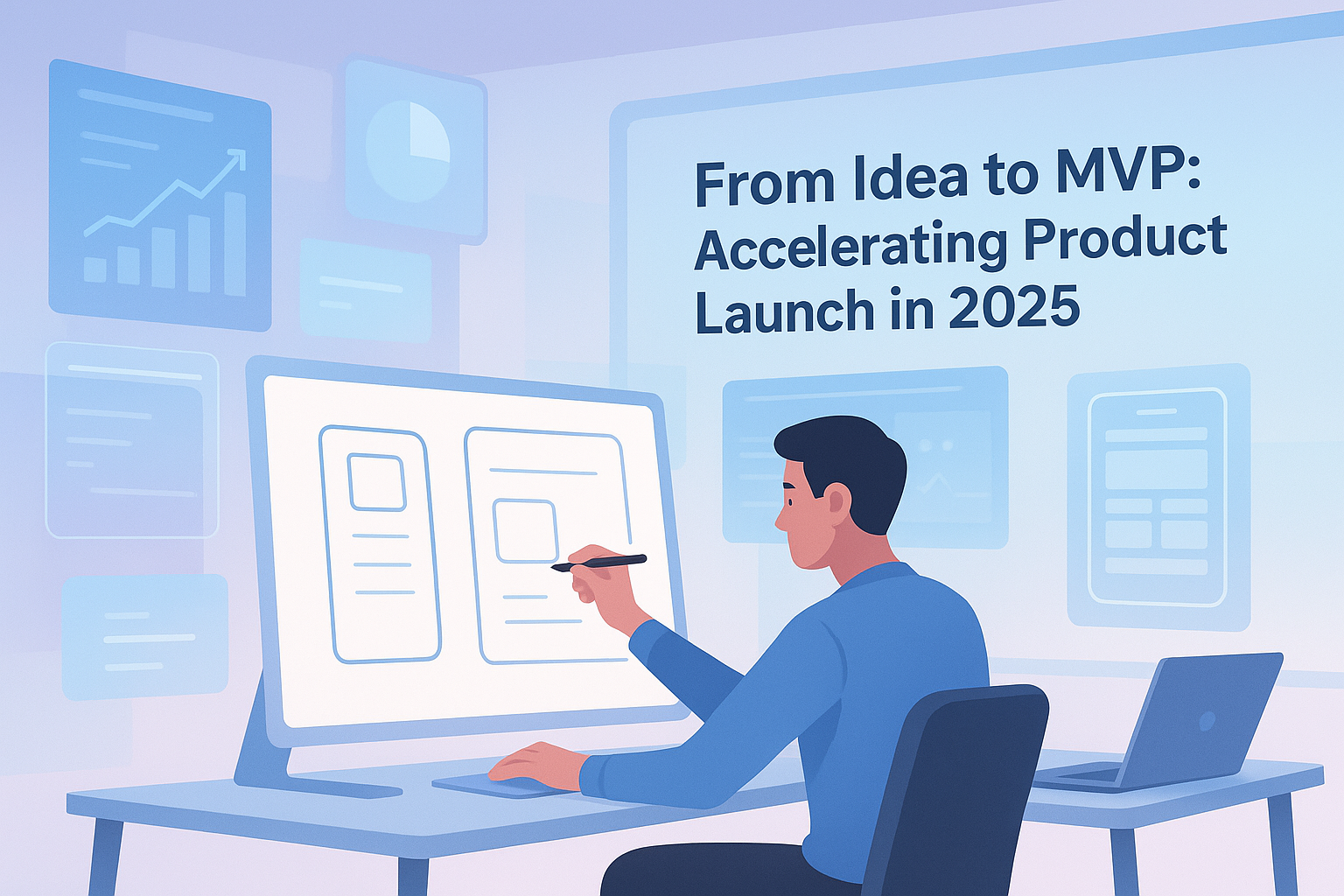From Idea to MVP: Accelerating Product Launch in 2025

So you’ve got this amazing idea for a product. You can already picture it, use it, and imagine your future success. You’re ready to dive in headfirst and build the perfect product that’ll change the world.
But here’s the thing — that perfect product might just be the biggest mistake you make.
Welcome to the world of MVP (Minimum Viable Product) development in 2025.
And spoiler alert: it’s not about building something incomplete or cheap — it’s about being strategically smart.
The MVP Mindset Shift: Quality Meets Speed
Let’s be real — in 2025, the market moves faster than ever.
Your competition isn’t sitting around waiting; they’re shipping products, learning from users, and improving every week.
If you spend six months perfecting every pixel before launch, you might miss your window entirely.
That’s where an MVP comes in — your proof of concept.
Not a broken product, but a focused one. It solves one core problem really well instead of solving ten problems okay.
The Beauty:
- You get to market faster
- You gather real user feedback (not guesses)
- You validate whether people actually want what you’re building
42% of startups fail due to lack of market need. An MVP prevents exactly that catastrophe.
The MVP Journey: Five Key Phases

Phase 1: Problem Validation (Week 1–2)
Don’t build before confirming the problem exist
- Talk to 20–30 potential users
- Identify urgent pain points
- Research alternatives
If your idea doesn’t solve a painkiller problem, it’s just a vitamin.
Phase 2: Define Your MVP (Week 3–4)
List every feature you think you need — then cut 80%.
Use a Value/Effort Matrix:
Focus on high-value, low-effort features only.
Your MVP = core features that solve one main problem.
Phase 3: Choose Your Tech Stack (Week 5)
Avoid code if possible. In 2025, no-code tools rule MVPs.
Try:
- Webflow / Bubble
- Glide / FlutterFlow
- Adalo
Launch 3–5x faster and save thousands.
Need complexity? Add code later.
Phase 4: Build in Sprints (Week 7–12)
Go Agile — work in 1–2 week cycles, release often, and measure everything.
Track:
- Sign-ups
- Drop-offs
- Feature usage
Data beats opinions, always.
MVP Timelines & Cost
Add 2–4 extra weeks if you haven’t completed problem validation.
The Launch: Build Buzz, Not Silence

Pre-launch:
- Build a waitlist
- Share updates on social media
- Build community buzz
Launch Day:
- Announce on ProductHunt & X (Twitter)
- Email your early adopters
- Watch analytics closely
After Launch:
- Fix fast
- Talk to users
- Iterate weekly
Don’t launch and disappear — launch and listen.
Metrics That Actually Matter
Low activation = unclear onboarding.
Low retention = low value.
Avoid These Common MVP Traps
Quick MVP Checklist
Week 1: Validate problem
Week 2: Define key features
Week 3: Build fast (no-code if possible)
Week 4: Test with users
Week 5+: Launch, track, and iterate
Final Thought
An MVP isn’t a shortcut — it’s a smarter path.
Focus fast, validate early, and learn constantly.
Done and learning beats perfect and delayed — every single time.
Now go build something people actually want.